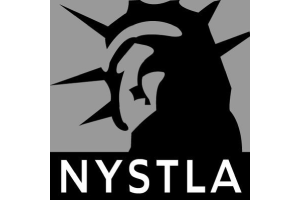Variable Annuities
Annuity contracts are often marketed as a retirement vehicle through which to turn savings into an income stream. The two most common types of annuities are fixed annuities and variable annuities; in addition, there is a hybrid product known as an indexed annuity.
There are a number of fees and expenses associated with annuities, including up-front commissions (which can be as high as 7% or more), surrender charges, mortality and risk charges, as well as certain administrative fees.
Variable annuities often have high up-front commissions paid to the broker at the time of sale or over a period of time. Any case in which which a broker recommends switching from one variable annuity to another is a red flag that merits investigation.
Variable Annuities – Features and Characteristics
Under the law, a variable annuity (“VA”) is deemed a security and, as such, falls within the jurisdiction of the Financial Industry Regulatory Authority (“FINRA”). VA’s are often marketed to investors as part of the retirement planning process because they potentially offer an investor protection against outliving one’s assets, as well as the opportunity to participate in the upside of any market gains.
As its name implies, a VA’s rate of return will vary depending on the performance of the underlying securities held in investment portfolios, or subaccounts. These securities may include stocks or a stock index (e.g., the S&P 500), as well as bond or money market funds. In general, an investment in a VA has two phases: (1) the “accumulation” phase, where the premiums are allocated among investment portfolios, or subaccounts, and earnings on the investments accumulate, and (2) the “distribution” phase, where the insurance company pursuant to the annuity contract makes guaranteed minimum payments to the investor.
While VA’s do possess potential benefits (as referenced above), they are highly complex and costly financial products and should be treated with care and caution by any investor. Some of the key features and characteristics of VA’s include:
- Hybrid Product: a VA functions as both an insurance product and an investment product. In fact, VA’s have been described as ‘mutual funds in an insurance wrapper’;
- Different from Fixed Annuities: a fixed annuity operates like any other fixed income investment, in that a fixed annuity will pay a certain predetermined interest rate, thus providing stable and predictable cash flows. Conversely, the rate of return on a VA investment is not stable, and is subject to fluctuation based on the performance of the underlying investments held in subaccounts through the annuity contract;
- Different from Mutual Funds: while they share some similarity to mutual funds, VA’s are unique in the following respects:
- Tax-deferred treatment of earnings – VA’s are often marketed as a tax-advantaged investment vehicle;
- A death benefit – as a hybrid investment / insurance product, a VA has a death benefit component;
- Annuity payout options that can provide lifetime income – VA’s are often marketed to investors seeking to ensure that they will not run out of retirement savings.
High Costs and Risks Associated with Variable Annuities
VA’s are often marketed as attractive and safe investment vehicles, particularly to older investors nearing or at the cusp of retirement. When it comes to VA’s, our office recommends that investors carefully consider some of the risks and pitfalls associated with VA’s, including the following:
- Fees and Expenses: VA’s typically impose high annual fees and expenses, in addition to very high up-front commissions — some of these expenses may include:
- up-front commission (as high as 7-8% in some cases);
- underlying fund expenses related to subaccounts;
- administrative fees for record-keeping, etc.;
- mortality and expense risk charges, charged by the insurance company to cover the guaranteed death benefit component of the annuity contract and/or a payout option to provide guaranteed lifetime income;
- charges for special features including stepped-up death benefits, principal protection, long-term health insurance component, etc.;
- Sales and Surrender Charges: most VA’s have a sales charge, similar to mutual funds. Often, surrender charges may start as high as 7% in the first year and decline each following year. Investors should understand and carefully evaluate this risk before investing in a VA;
- Liquidity and Early Withdrawals: deferred VA’s, in particular, are designed as long-term investments. Investors should understand that exiting such an investment early could involve steep surrender charges, as well as negative tax implications (particularly before an investor reaches age of 59 ½);
- Taxes: VA’s are often marketed as tax efficient investment vehicles, and there is some truth to this. However, VA’s do not provide all the tax benefits of certain retirement accounts, including 401(k)’s and IRA’s. Investors should, therefore, evaluate any VA investment accordingly and consider the following:
- Contributions to 401(k)’s and IRA’s allow the investor to defer taxes on income and investment gains, in addition to reducing current taxable income;
- Contributions to 401(k)’s and IRA’s, once withdrawn (with no penalty assuming the withdrawals occur at 59 ½ or later) will be taxed at the applicable capital gains rate, whereas withdrawals from VA’s will be taxed as ordinary income;
- Unlike investments in stocks, bonds, and mutual funds, most VA’s do not provide an investor with a “step-up” in cost basis upon the contract owner’s death.
- Guaranteed Death Benefit: investors should understand that any guarantee to pay a death benefit is only as good as the viability of the insurance company writing the annuity contract. More importantly, research suggests that many investors in VA’s (the statistics suggest about 10%) will ultimately surrender their contracts before death, thus calling into question the advisability of paying for a high-expense product with an embedded death benefit that may well not be exercised;
- VA’s within IRAs (or other tax-advantaged accounts): investors should be suspicious of any recommendation by a broker or wealth manager to invest in a VA within a tax-advantaged account. Because an IRA is already a tax-efficient account, there is no tax advantage to purchasing a VA within an IRA (or similar account).
Broker Misconduct and Sales Practice Violations Concerning Variable Annuities
Where appropriate, a broker’s recommendation to purchase a VA may satisfy a client’s needs and be prudent and in keeping with the investor’s risk profile and stated investment objectives. However, as with other complex and expensive financial products, the recommendation to purchase a VA may also call into question the suitability of the product, as well as possible broker misconduct concerning whether the investor received full and accurate disclosure of the product’s components and features, including commissions and fees.
FINRA has acknowledged that VA’s are frequently subject to sales abuse by unscrupulous brokers and wealth advisors seeking commissions and fees at the expense of their clients. At a recent Insured Retirement Institute conference in Washington, D.C., FINRA enforcement officials were quoted as follows: “Variable annuities are just frequently involved in our cases. They are at the sweet spot of complex products marketed to retirees and people about to retire.”
In May 2016, the insurance company Metlife Inc. (“Metlife”) was assessed a $25 million fine in connection with allegations of sales abuse by certain MetLife financial advisors who engaged in VA switching, a practice of recommending the sale of an existing VA for purchase of a new VA. Specifically, FINRA pointed to compliance failures that allowed for misleading VA sales, including misrepresentations and omissions of fact in approximately 72% of over 35,000 applications for VA’s that MetLife approved between 2009-2014. While the new products marketed to investors were recommended as less expensive and more beneficial, FINRA concluded that the investors would have been better off had they simply remained invested in their current VA’s.
Do You Wish to Further Discuss Your Potential Claim?
If you have invested in what may be an unsuitable variable annuity or similar product, or your financial advisor has recommended switching from one VA into another VA investment, you may be able to recover your losses in FINRA arbitration. Investors who wish to discuss a possible claim may contact a securities arbitration attorney at Law Office of Christopher J. Gray, P.C. via the contact form on this website, by telephone at (866) 966-9598, or by e-mail at newcases@investorlawyers.net for a no-cost, confidential consultation.





